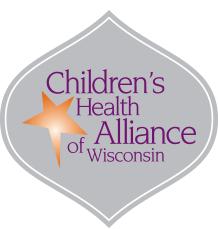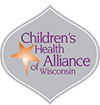PRAIRIE DU CHIEN, Wis. — Bubbles frequently appear at Crossing Rivers Health in Prairie du Chien, Wis. While bubbles may be mesmerizing, they aren’t used just for fun, though, because they play a role in a larger purpose — helping provide top-notch care to the hospital’s youngest patients.
Crossing Rivers Health is one of seven Wisconsin hospitals that are part of the Pediatric Readiness Quality Care Collaborative (PRQC), a national quality improvement learning collaborative. Over the course of two years, beginning in 2018, Crossing Rivers Health has worked with pediatric specialists from the Wisconsin EMS for Children Program to improve their readiness to care for children in the emergency department by implementing changes to their hospital policies. The policies align with the American Academy of Pediatrics Guidelines for Care of Children in the Emergency Department best practice recommendations.
Being a part of PRQC has been beneficial for Crossing Rivers Health as it sees about 9,000 patients a year with approximately one-third being pediatric patients. Young patients present complex cases, even if the diagnosis is a simple cold. Children are oftentimes scared of the hospital and equipment used to care for them, according to Heidi Kirschbaum, the Emergency Department Clinical Director at Crossing Rivers Health.
But the emergency department staff at Crossing Rivers Health has less anxiety when working with children, because the hospital has the education and equipment to care for pediatric patients in almost any situation.
“We had a bus accident where we had multiple critically injured children, and we had an amazing response,” Kirschbaum said. “Everyone was like, ‘We’ve got this. We can do this,’ and there was less anxiety around it because we had the necessary resources.”
The staff at Crossing Rivers Health have Pediatric Distraction kits which include bubbles, music, books, and glitter wands used to distract children during care. They also have medical equipment such as a pediatric crash cart filled with all of the necessary tools needed to care for a critically ill child.
The abundance of pediatric resources came after 2015 when Kirschbaum took the National Pediatric Readiness Assessment. After taking the 57-question assessment, Kirschbaum received insight and was able to uncover areas in which the hospital could improve upon when it came to caring for their youngest of patients.
After completing the assessment, Kirschbaum received a Pediatric Readiness Score and Gap Analysis report which also provided optional resources to improve pediatric care in the emergency room. So far, one of the resources Crossing Rivers Health purchased has been making a large impact in its care of children.
“We have always had something called a Broselow Tape, which is a colored tape, and when you lay a child down on it, it has all of their medication and doses on it for their size,” Kirschbaum said. “It’s super easy to use, but the assessment recommended a computerized version of that. We bought that system, and now we use it hospital wide.”
“The Assessment gave us so many resources that we didn’t have yet and the staff feels much more confident now.”
The National Pediatric Readiness Assessment will open again in June 2020 and will remain open until September 2020 and every emergency department in the state will be encouraged to take it.
To be even more prepared for pediatric patients, the staff at Crossing Rivers Health implemented a Pediatric Committee roughly three years ago. The committee, ran by Heather Fulks, an OB/Inpatient nurse, meets quarterly to discuss available trainings, education, run mock pediatric codes and more.
Using tools such as the National Pediatric Readiness Assessment and establishing resources, such as the Pediatric Committee, Kirschbaum knows that children in the Crossing Rivers Health Emergency Room will be properly cared for, which carries more meaning than meets the eye.
“If kids have a bad experience in the emergency department, or really anywhere in the medical field, it stays with them for the rest of their life,” she said. “That experience shapes how they’re going to react down the road.”
“We use a lot of comfort measures for the kids. We use bubbles all the time, you cannot believe what those bubbles can do for the kids.”


